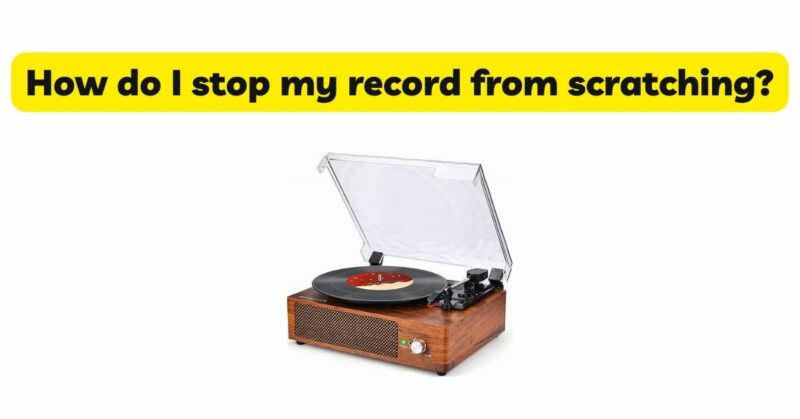Vinyl records have experienced a resurgence in popularity, captivating music enthusiasts with their warm sound and nostalgic appeal. However, the vulnerability of records to scratches remains a concern for collectors and enthusiasts alike. Preventing record scratching is paramount to preserving the audio quality and longevity of these cherished musical artifacts. This article aims to explore effective measures that can be taken to safeguard vinyl records from scratches, providing practical tips and recommendations for maintaining pristine playback experiences.
Handle Records with Care: Proper handling is crucial in preventing scratches on vinyl records. Always handle records with clean hands to avoid transferring oils, dirt, or debris onto the surface. Hold records by the edges or the label area to minimize contact with the playing surface. Avoid touching the grooves, as even light pressure or accidental slips can result in scratches. By handling records with care, you can significantly reduce the risk of physical damage.
Clean Records Regularly: Regular cleaning is essential to remove dust, dirt, and other particles that can cause scratches during playback. Use a record cleaning brush or a carbon fiber brush to gently sweep away surface debris before each play. For more thorough cleaning, consider investing in a record cleaning machine or use a dedicated record cleaning solution along with a microfiber cloth. By keeping records clean, you can minimize the chances of particles becoming embedded in the grooves and causing scratches.
Invest in Protective Sleeves: Protective sleeves are an invaluable investment for safeguarding vinyl records from scratches. Replace worn or damaged paper or cardboard sleeves with high-quality anti-static inner sleeves. These sleeves not only provide a barrier against physical contact but also help prevent the buildup of static electricity that can attract dust particles. Additionally, outer record sleeves or jackets offer an extra layer of protection from accidental bumps, scratches, or exposure to light. Utilizing protective sleeves is a simple and effective way to preserve the integrity of your records.
Store Records Properly: Proper storage plays a crucial role in preventing scratches and other forms of damage to vinyl records. Store records vertically in sturdy record storage units or shelves to avoid excessive pressure or leaning that can cause warping or scratches. Avoid overcrowding by leaving sufficient space between records. Ensure that the storage area is cool, dry, and free from extreme temperature fluctuations and direct sunlight. Maintaining the right storage conditions protects records from physical harm and deterioration.
Maintain Turntable and Accessories: A well-maintained turntable setup can greatly minimize the risk of record scratching. Ensure that the turntable is properly calibrated, including adjusting the tracking force, anti-skate, and cartridge alignment. Check the stylus regularly for signs of wear and replace it when necessary. Keep the turntable clean by regularly dusting the platter, tonearm, and other components. Additionally, use a high-quality stylus that is appropriate for your cartridge and records. By maintaining a properly functioning turntable, you can reduce the likelihood of scratching due to mechanical issues.
Avoid Cross-Contamination: Cross-contamination between records can occur when they come into contact with each other. To prevent scratches caused by record-to-record contact, avoid stacking records directly on top of one another without protective sleeves or jackets. Use dividers or specialized record storage solutions to keep records separated and prevent them from rubbing against each other. This precautionary measure ensures that records remain scratch-free even when stored in close proximity.
Be Mindful of Playback Conditions: During playback, certain precautions can help protect records from scratching. Ensure that the turntable surface is clean and free from dust or debris that could get lodged between the record and platter. Avoid sudden movements or bumps to prevent the stylus from skipping or dragging across the surface. When manually cueing or placing the stylus on the record, do so gently and precisely to avoid scratching. By maintaining a controlled playback environment, you can minimize the risk of accidents that could lead to scratches.
Conclusion: Preserving the pristine condition of vinyl records requires a combination of care, maintenance, and preventive measures. By handling records with care, regularly cleaning them, investing in protective sleeves, storing them properly, maintaining turntable equipment, avoiding cross-contamination, and being mindful during playback, you can significantly reduce the risk of scratches. Adopting these practices ensures that your vinyl records remain in excellent condition, allowing you to enjoy their melodious treasures for years to come.


